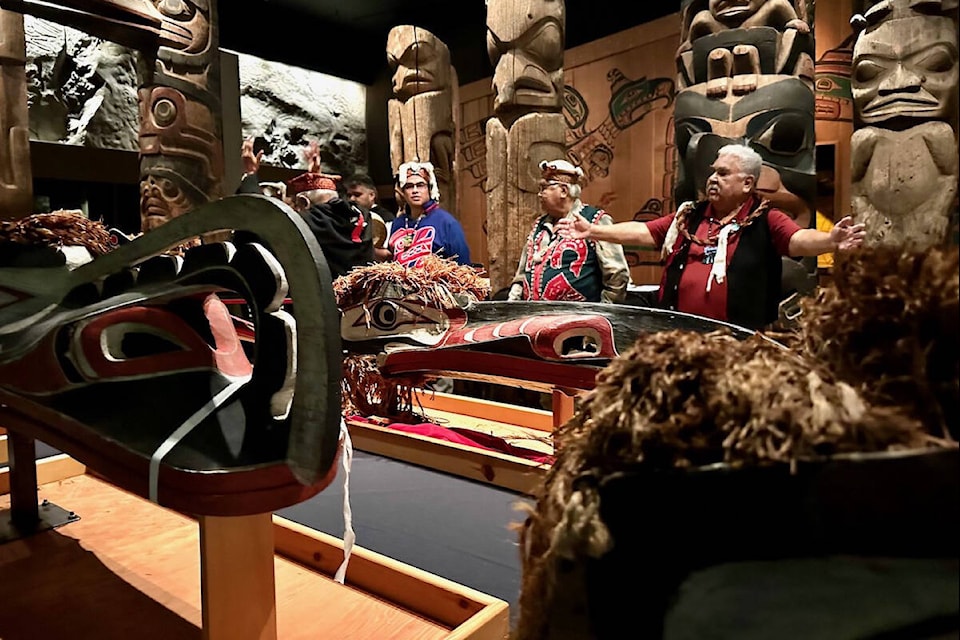In the grand totem hall in the Royal B.C. Museum last week, hereditary chiefs and representatives of the Gwa’sala-‘Nakwaxda’xw Nations reclaimed their kikasu.
These are the treasures of their ancestors that have been stored at the museum for decades. They include 17 exquisitely carved Hamatsa masks, and other regalia and sacred items carved and created by the grandparents and great-grandparents of those present to reclaim them.
Many of the items are destined to be danced and honored in the opening of a new Gukwdzi (Bighouse) next spring, the first Gukwdzi to be built by the First Nations since the government burned down all the Bighouses in their homelands in 1964 and forcibly relocated the community to Port Hardy.
“The cultural genocide we suffered has been very real,” stated Hereditary Chief Maxwa Paddy Walkus. “The government passed laws, outlawed our culture, burned down our Bighouses and took away our sacred regalia. Today we stand proud and claim our right to bring home the treasures of our ancestors so we can teach our children and grandchildren our ways.”
The Gwa’sala-‘Nakwaxda’xw have always been renowned as master carvers. Historically, other First Nations up and down the coast would commission masks, totems poles and other works for their own potlatches and ceremonies. However, the Gwa’sala-‘Nakwaxda’xw suffered severely under the Canadian anti-potlatch laws from 1885-1951. Then in 1964 the Canadian government forcibly moved them from the central coast to northeastern Vancouver Island.
The Dec. 6 repatriation declaration marks an important milestone in reclaiming their history, culture and identity.
“Each of these sacred masks has a story, song and dance,” stated 87-year-old Hereditary Chief Kwakitola Henry Seaweed, an internationally renowned advisor on Hamatsa masks and dances. “My grandfather (Master Carver Willie Seaweed) carved some of these masks and taught me their stories. Our laws demand that we bring these home to our own Bighouse so we can teach our children our ways.”
Chief Seaweed presented the declaration to the RBCM and then spryly and reverently danced a part of the Hamatsa beneath the eyes of the masks and among the spirits of his ancestors.
“These master works are the breath of our ancestors,” observed Hereditary Chief Gixsistalisami Wakas Willie Walkus. “That breath will flow into our children and grandchildren and strengthen our culture and our hope for the future.”
Times have changed significantly in the past decades. The RBCM now says it is deeply committed to reconciliation and knowledge sharing with Indigenous groups.
The chiefs thanked the lək̓ ʷəŋən Nations for allowing the RBCM to be on their land but also the many RBCM staff who have made it possible to facilitate the repatriation and host the GNN Chiefs and representatives.
READ ALSO:
READ ALSO:




